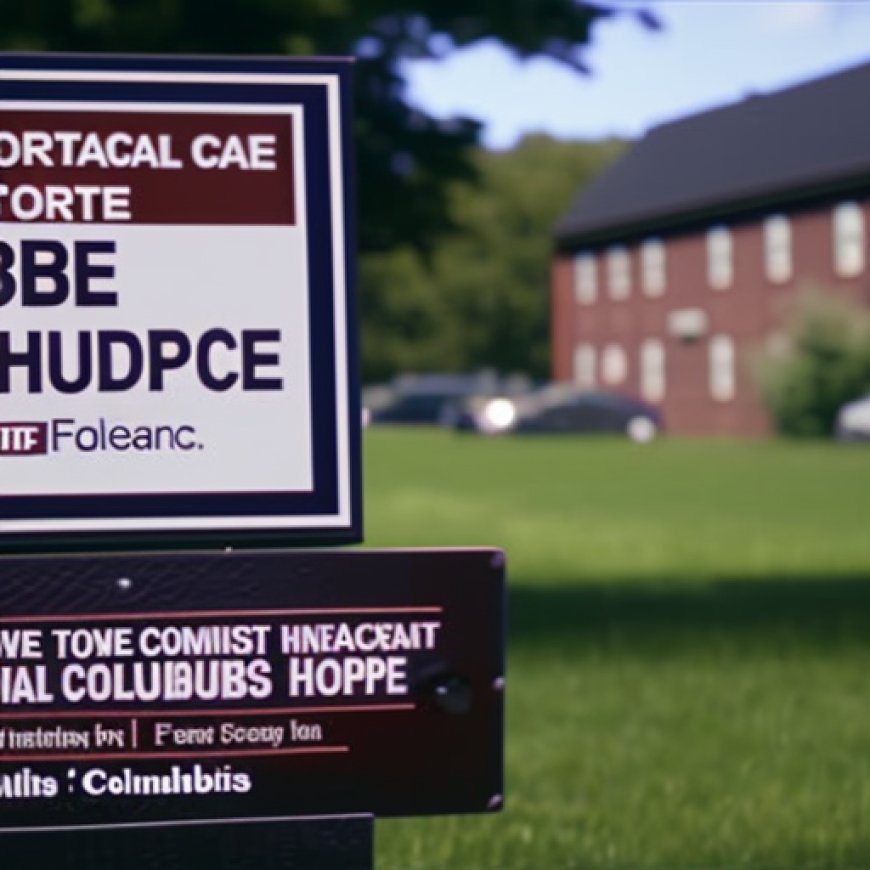Historical marker to be placed at former AIDS hospice house in Columbus
Historical marker to be placed at former AIDS hospice house in Columbus 10TV


Barb Cordle and the Legacy of Pater Noster House
Barb Cordle opened Pater Noster House during a time of intense homophobia, made even worse by the AIDS epidemic.
Introduction
Barb Cordle, a devout Catholic, dedicated her life to serving others. In 1985, she visited a homeless shelter and met a man with AIDS. This encounter led her to establish Pater Noster House, a hospice for people with HIV and AIDS. Despite having limited resources, Barb selflessly provided care and support to those in need.
The Impact of Pater Noster House
Pater Noster House quickly became a vital resource for the LGBTQ+ community in Columbus. Many individuals who were terminally ill found solace and dignity in their final days at the hospice. Others received medical treatment and went on to live fulfilling lives. The house provided 24/7 medical care, food, and a safe space for fellowship and friendship.
Challenges Faced by the LGBTQ+ Community
During this time, the LGBTQ+ community faced discrimination and limited access to healthcare in mainstream hospitals. Pater Noster House offered a welcoming environment where their identities were validated, and they were not ostracized by society.
Barb Cordle’s Dedication
Barb and a team of volunteers cared for over 900 individuals between 1985 and 2000. Many of these volunteers were also living with HIV infections themselves. They worked tirelessly, knowing that they might one day be in the same position as those they cared for.
The Iconic Photograph
In 1990, a photograph taken by Therese Frare at Pater Noster House gained international recognition. The picture depicted a patient named David Kirby, ravaged by AIDS, being cradled by his father. This image challenged the stereotype that people with HIV/AIDS died in isolation and humanized the epidemic.
Recognition and Legacy
Pater Noster House closed its doors 24 years ago, but its impact on Ohio’s history remains significant. The Ohio History Connection plans to honor the hospice with a historical marker, recognizing its role in providing compassionate care during a challenging time. This marker is part of a larger effort to acknowledge LGBTQ+ sites across the state.
Conclusion
Barb Cordle and the volunteers at Pater Noster House exemplified love for humanity and a commitment to serving others. Their work not only provided essential care but also fostered a sense of community and acceptance. Their legacy continues to inspire and remind us of the importance of compassion and inclusivity.
SDGs, Targets, and Indicators
1. SDGs Addressed or Connected to the Issues Highlighted in the Article:
- SDG 3: Good Health and Well-being
- SDG 10: Reduced Inequalities
- SDG 16: Peace, Justice, and Strong Institutions
2. Specific Targets Based on the Article’s Content:
- SDG 3.3: By 2030, end the epidemics of AIDS, tuberculosis, malaria, and neglected tropical diseases and combat hepatitis, water-borne diseases, and other communicable diseases.
- SDG 10.3: Ensure equal opportunity and reduce inequalities of outcome, including by eliminating discriminatory laws, policies, and practices and promoting appropriate legislation, policies, and action in this regard.
- SDG 16.7: Ensure responsive, inclusive, participatory, and representative decision-making at all levels.
3. Indicators Mentioned or Implied in the Article:
- Number of patients cared for at Pater Noster House (indicator for SDG 3.3)
- Number of LGBTQ+ individuals who accessed care at Pater Noster House (indicator for SDG 10.3)
- Existence of historical markers honoring LGBTQ+ history (indicator for SDG 16.7)
Table: SDGs, Targets, and Indicators
| SDGs | Targets | Indicators |
|---|---|---|
| SDG 3: Good Health and Well-being | 3.3: By 2030, end the epidemics of AIDS, tuberculosis, malaria, and neglected tropical diseases and combat hepatitis, water-borne diseases, and other communicable diseases. | Number of patients cared for at Pater Noster House |
| SDG 10: Reduced Inequalities | 10.3: Ensure equal opportunity and reduce inequalities of outcome, including by eliminating discriminatory laws, policies, and practices and promoting appropriate legislation, policies, and action in this regard. | Number of LGBTQ+ individuals who accessed care at Pater Noster House |
| SDG 16: Peace, Justice, and Strong Institutions | 16.7: Ensure responsive, inclusive, participatory, and representative decision-making at all levels. | Existence of historical markers honoring LGBTQ+ history |
Copyright: Dive into this article, curated with care by SDG Investors Inc. Our advanced AI technology searches through vast amounts of data to spotlight how we are all moving forward with the Sustainable Development Goals. While we own the rights to this content, we invite you to share it to help spread knowledge and spark action on the SDGs.
Fuente: 10tv.com

Join us, as fellow seekers of change, on a transformative journey at https://sdgtalks.ai/welcome, where you can become a member and actively contribute to shaping a brighter future.







